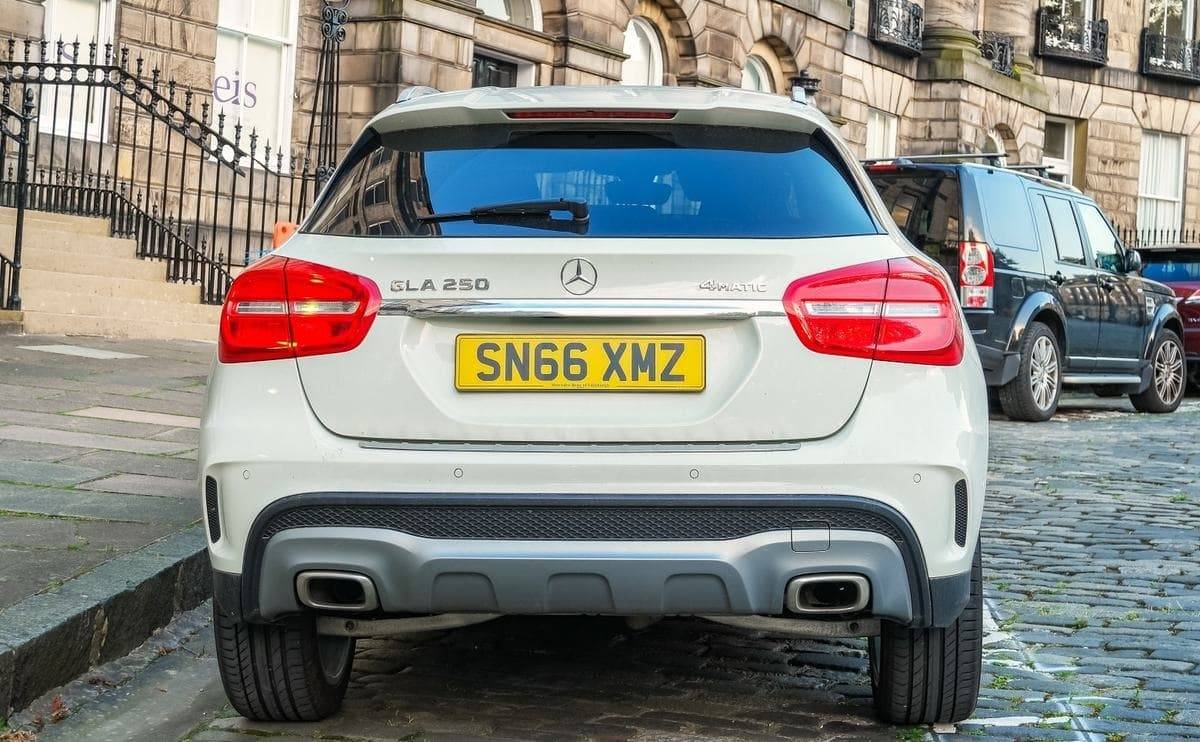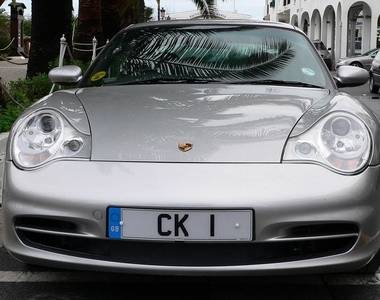While it hasn’t always been so, cars on UK roads today feature two colours of number plate. Yellow plates must be affixed to the back of vehicles with characters shown in black and the number plate at the front must be white with black characters. Laws regarding registration plates in the UK are very strict and infractions could cost you a failed MOT and a fine of up to £1,000. From the exact height and width of the characters to the material they’re crafted on, number plates have several rules car owners need to stick to. They even have their very own font known as Charles Wright. Although thanks to technology there’s a little room for customisation with 3D and 4D printing, when it comes to the colour of your plates, the Driver and Vehicle licensing Agency (DVLA) won’t budge.
But exactly why are number plates yellow and white here in the UK? If this is a question you’ve been curious about, then read on for some enlightening information on the two plates our cars carry everyday. From the laws that govern them to a history of plate colours you’ll find out everything you need to know about the current colour scheme of UK plates.
Number plate colours in the UK
Older number plates in the UK were once black with either silver or white characters showing the alphanumerical registration display. In 1972, this style of plate was on its way out but still legal on cars and other vehicles up until the year 2012, when they were permanently phased out. Before 2012, this style of plate was accepted as legal if it was registered before January 1st 1973.
From the year 1979, all standard vehicles that didn’t come under this category had to carry the plates we see on our roads today, white at the front and yellow at the back.
Military vehicles still carry black plates with white or silver characters and, unlike the legal plates carried by our cars, aren’t fashioned from reflected material. This is to keep them safe and avoid them being targeted by laser sighted weapons, which can make use of a reflective finish to take aim.
What colour number plates are legal?
While the individual rules for registration plates can often feel complicated, it’s important you fully understand them to sidestep an unnecessary difficulty or financial loss. If you should fail to follow the government guidelines you might find yourself facing penalties that could include a fine of up to £1,000 for being caught by officials on the road or failing your essential MOT test.
The present format for number plates here in the UK consists of two letters then two numbers followed by three letters. The first two letters are called the memory tag from the DVLA and show the location of a car’s first registration. The two numbers that then follow state the vehicle’s age. If a car is registered between March and September it takes the last two digits of the year, for example in 2019, these would be one and nine. If the car is registered from September to March, it takes those two digits and adds fifty. So, cars registered after September in 2019 will have a six and a nine for the third and fourth numbers on their number plate. The final three letters on the plate are random and issued to dealerships and identify different vehicles.
To be considered legal, a number plate will comply with all the rules on size, spacing, margin requirements as well as font. It’ll also stick to the rigid requirements involving no patterns and set colours to make certain it’s always fully legible for both the authorities and other drivers to read. Some car owners who do not own the personalised plate they want might be tempted to add a black bolt close to a letter or number on a plate, so it better resembles the one they want, creating a phrase, word or name. However, the rules of number plates are so precise that they even specify the correct colour of screws used to bolt a plate in place. The use of black fixings on a plate are not allowed if they are close to the characters and interfere with how they’re read.
Here in the United Kingdom, it’s required by law that all cars carry two number plates - one at the front and one at the rear. The registration plate fitted to the front of the car must always be white in colour and display its characters in black. At the rear end of the vehicle the number plate must be yellow with black characters.
While this is non-negotiable, it’s possible to add a little colour to your number plates in the form of a selection of specific flags, which can be displayed on your registration. Drivers in the UK can choose from the blue and white of the St Andrew’s cross for Scotland, a red and white St George’s Cross for England or even the red Welsh Dragon. The white, red and blue of the Union Jack is also open to drivers if they desire.
You may have come across the term “Show Plates”. When drivers are displaying their vehicles, they sometimes dress them with show plates, often made of the same materials as regular number plates they allow for a more personal approach when it comes to design. As they’re for cars that aren’t on the road, they don’t need to adhere to the rigid rules that govern registration plates in this country. There’s no limit to the possibilities for these plates, they can use any colour they like for the background or the characters and can even contain a pattern. A motif or illustration, something which would be illegal on a UK plate, isn’t uncommon either on a show plate. The fonts used for the alphanumerical characters can also be bespoke creating unique designs for car owners to wear on their vehicles.
Why are number plates yellow and white?
You’ll often see online car forums discussing in depth the question why the UK has yellow and white number plates. Some car owners believe the yellow plate was chosen because it’s illegal to show a white light at the rear of your vehicle. All registration plates must be made from reflective material, so if your rear plate was white it might reflect a white light, which is against the law. Others think it’s a style we inherited from the French, who used registration plates long before us and once had yellow rear plates too. This changed in 2009 when France adopted black on white plates at both the front and rear of their vehicles.
According to the DVLA, the plates every car carries in the UK are different in colour for a simple reason. By having a yellow number plate at the rear and white plate at the front other drivers can quickly assess at a glance if they’re looking at the front or rear of a vehicle. This information then allows them to weigh up the likelihood of the vehicle either coming towards them or moving away from them.
The white background with black alphanumeric characters affords those viewing a vehicle the best opportunity of reading the registration clearly due to contrast so was picked for the front plate. For the rear plate, yellow was chosen as, after white, it was the next clearest colour for the human eye to read black characters on.
What’s the difference between white and yellow number plates in the UK?
The difference between the white and yellow plates on UK cars isn’t to do with the plates but where they’re placed. Since 1973, the white number plate with black characters must be fixed to the front of your car and the yellow to the back.
If you’re looking to get a set of yellow and white number plates made, they’re not difficult to come across. However, you’ll need some supporting documents to prove your identity and that you’re the registered keeper of the car. For proof of identity you’ll need photo identification, like your driver’s licence or passport, and some proof of where you live. This should be a bank statement or utility bill, but must be less than six months old. For proof of entitlement of the registration you’ll need your V5C registration document also known as a logbook. If you’ve misplaced this document, don’t worry it can be replaced. You can apply to the DVLA for a new one for a fee of £25.











